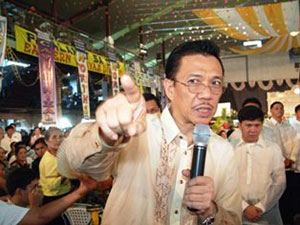Trends of the week: Philippine Arena makes Twitter’s jaw drop
MANILA, Philippines - The gigantic, sprawling structure that is the Philippine Arena stood tall on the trends list for days, inspiring Pinoy Pride, fantasies of huge foreign bands finally holding concerts in the country, and some inevitable head shaking. More than the impressive facility, the P7.8 billion pricetag stuck out like a giant dome of “what ifs” on Twitter. What if it were spent on public infrastructure instead, like classrooms or farm-to-market roads? What if we just gave it to the poor, as if it were that simple; but still: what if?
The what-if game is fruitless, given that the funds came from Iglesia ni Kristo, which has a membership large enough to swing elections, so sourcing P7.8 billion shouldn’t be much of a stretch. Because none of this involves government money (as far as we know), any attempt by people in social media to turn this into an issue of fiscal irresponsibility seems misplaced. But this is still “public” money and still exists as a 200-foot-high, 55,000-seat, world’s-largest-indoor-arena reminder of the ways in which money is spent in a country where a majority of citizens have little to none of it.
So now we have the biggest arena in the world. The Philippine Arena beats London’s O2 Arena by more than 30,000 seats, which should be great, if Bocaue could also beat London in the number and scale of music and sporting events in any given month. But this is supposedly a religious-civic enterprise, and not a commercial one, so we don’t need U2, Coldplay and the Olympics to come every other week to justify its multibillion-peso existence. The INC doesn’t owe anyone any explanation — they can spend their own money any way they want. It has, however, made a glaring, if unintended implication: the Philippines isn’t really a poor country; it’s just fiscally weird.
‘Today is National Ice Cream Day’ trends for 2 days because ice cream is so awesome, it stretches time
President Ronald Reagan is remembered for many things: Reaganomics, the end of the Cold War, and for being the last competent Republican president, among many. It’s unfortunate that hardly anyone remembers that fateful day of July 9, 1984, when President Reagan signed Proclamation 5219, declaring July 15 as “National Ice Cream Day” and July as “National Ice Cream Month.” Luckily, we have Twitter now to remind us of these earth-shaking events that sound like jokes but are actually insanely true.
“Ice cream is a nutritious and wholesome food,” Reagan, who would later suffer from Alzheimer’s Disease, wrote. What a landmark piece of legislation. If Reagan can convince Mikhail Gorbachev to tear down the Berlin Wall, then surely he can be right about ice cream. That glorious confection that pushes us closer towards obesity and diabetes is not only not unhealthy — it is nutritious. We still have a few days left in the National Ice Cream Month, and since Pinoy Twitter has long forgotten its nationality, let’s make every remaining day count.
 #NoToSofitel lives on
#NoToSofitel lives on
If you’ve taken even one glance at trends list over the last couple of weeks, you may be vaguely aware of the hashtags #NoToSofitel and #BoycottSofitelPH. You may think that the hotel is embroiled in some sort of screw-up that has somehow eluded the news. You may also think that Twitter is just generally insane and that there couldn’t possibly be anything wrong with Sofitel. You may also not care either way.
Fortunately — or unfortunately — I do. I care about hashtags and where they come from. I have scaled the depths of social media’s shallowness and have seen the limitless potential of Pinoy weirdness.
So here are the facts:
The boycott movement was set off by TV channel UNTV and its CEO Daniel Razon, who accused the hotel of discrimination after it removed the channel from its TV programming. The movement stepped up a notch after Eli Soriano of Ang Dating Daan (a religious program produced by The Church of God International, of which Razon is also a member) also took to Twitter in support of the anti-Sofitel hashtags. Lesson: Do not underestimate the power of Ang Dating Daan.
Sofitel has already issued a statement on Facebook, saying that they do not discriminate, but that their guest televisions are “system-limited.” They cannot air all available channels so they have to rely on guest feedback to determine which channels to carry. “We are happy to hear the public’s concerns, and will consider to re-instate the UNTV Channel if this is a request from our hotel guests,” read the statement.
It seems that the hundreds of thousands of people responsible for trending #NoToSofitel and #BoycottSofitelPH also do not frequent Sofitel. If they did, UNTV would still be there. Since you cannot really boycott a hotel you never go to, and since you cannot suffer from the absence of a TV channel in a hotel you never stay in, no real problem exists here. Unless, of course, there are multitudes of unreasonable people on Twitter who are influenced by hashtags without bothering to research — and by “research,” I mean just simply “Google.” And as we all know, Philippine Twitter is nothing if not a hotbed of reason.
* * *
Tweet the author @ColonialMental.















